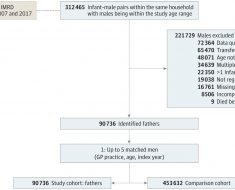
- Researchers investigated how common migraine headaches are in those who undergo nerve decompression surgery.
- They found that those who undergo nerve decompression surgery at certain sites in the body can be up to 70% more likely to have migraine than those with nerve decompression elsewhere.
- Further studies are needed to understand whether nerve decompression can treat migraine.
Nerves in the arms and hands can constrict around soft tissues and muscles, resulting in pain and loss of function. Different kinds of nerve compression in these areas affect from 5% to almost 9% of the population.
Surgical decompression is a common treatment for the condition and can lead to complete or partial improvement of symptoms.
Nerves that surround the head can also be compressed by surrounding muscles, vessels, and bone. Decompressing these nerves can lead to improvement or relief from migraine and headaches.
Carpal tunnel syndrome and migraine
Carpal tunnel syndrome occurs when the nerve that runs from the forearm to the palm of the hand is compressed at the wrist.
A cross-sectional study involving 25,880 participants found that 34% of people with carpal tunnel syndrome have migraine, compared to 16% of people without the syndrome.
Understanding whether nerve compression around the head is linked to nerve compression in the hands and arms could improve patient screening for the conditions.
Researchers examined how common migraine diagnosis is among those who underwent nerve decompression surgery for arms and hands.
They reported that those with certain kinds of nerve compression were more likely to experience headaches caused by migraine.
Dr. Chantel Strachan, an internist at ColumbiaDoctors and an assistant professor of medicine at Columbia University Irving Medical Center in New York who was not involved in the study, told Medical News Today:
“I would not rush to recommend carpal tunnel decompression in all patients with migraine. The decision to proceed with surgical treatment of nerve compression is individualized and should be discussed closely with a patient’s care team of doctors.”
The study was published in the journal Plastic and Reconstructive Surgery.
Who is most likely to experience migraine?
For the study, the researchers examined data from 9,558 people who underwent nerve decompression surgery of the arms and hands between 2009 and 2019.
The researchers also screened participants for a migraine diagnosis.
About 71% of the participants underwent median nerve decompression. It is a surgical procedure performed on the wrist to relieve pressure on the nerve and thus reduce symptoms of carpal tunnel syndrome.
About 14% of participants underwent ulnar nerve decompression. That is a nerve decompression of the elbow. Around 6.5% of patients had decompression surgery at multiple sites in the body.
In the end, the researchers found that those who had median nerve decompression and multiple nerve decompression were 30% and 70% more likely to have migraine than those who had ulnar nerve decompression.
Older age and male sex were independently linked to a lower incidence of migraine. Meanwhile, conditions including psychiatric conditions, rheumatoid arthritis, and hypothyroidism were linked to higher rates of migraine.
Nerve compression and migraine
To understand how nerve decompression and migraine may be linked, MNT spoke with Dr. Sean Ormond, a physician specializing in anesthesiology and interventional pain management.
He noted that the factors underlying nerve compression in the arms and hands and migraine are not fully understood, but that several theories exist.
“Both upper extremity nerve compression syndromes and migraine may share common risk factors, such as obesity, sedentary lifestyle, poor posture, or repetitive stress injuries,” Dr. Ormond said.
“Nerve compression [also] can trigger an inflammatory response in the affected area. Inflammation is also known to play a role in migraine pathophysiology. The presence of inflammation in one area of the body might contribute to an overall increase in inflammation, potentially exacerbating migraines,” he added.
Ormond noted that a genetic predisposition might make individuals more susceptible to upper nerve compression and migraine, although more research is needed to confirm this.
Dr. Strachan said that nerve damage might increase sensitivity to pain among those with migraine.
Limitations of the migraine study
Dr. Strachan noted that due to the retrospective design of the study, the findings point toward a correlation and not causation.
She added that criteria used to diagnose migraine may have varied by provider and their sub-specialty, which included primary care, neurology, and pain.
In the paper, the researchers noted that there is a general overlap between chronic pain syndromes, making it possible that the correlation between migraine and pain from nerve compression results from other factors.
‘A relatively novel approach’
When asked about the study’s implications, Dr. Ormond said: “It is important to note that nerve decompression surgery for migraine treatment is still a relatively novel approach, and its effectiveness may vary from person to person.”
“Research on this treatment option is ongoing and not all migraine sufferers may be suitable candidates for the procedure,” he added.
“It is essential for patients considering nerve decompression surgery for migraine treatment to discuss the potential risks and benefits with their healthcare providers and weigh the options against more conservative treatments such as medications and lifestyle modifications,” Dr. Ormond said.
Source: Read Full Article





